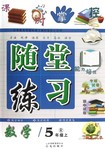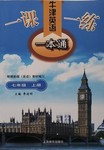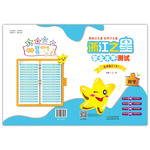题目内容
The people who lived in Italy and northern Europe during the fifteenth and sixteenth centuries were the first people to think of themselves as belonging to an era(时代). It was the Renaissance(文艺复兴), a period of renewed interest in learning after the Middle Ages.
![]() The motto(座右铭)of the Renaissance was “A man can do all things if he wills,” and the man who fulfilled that motto more than any other was Leonardo da Vinci. Da Vinci was good at portraiture, a new art form that described people as individuals. His painting of the “Mona Lisa” remains the most famous portrait ever done.
The motto(座右铭)of the Renaissance was “A man can do all things if he wills,” and the man who fulfilled that motto more than any other was Leonardo da Vinci. Da Vinci was good at portraiture, a new art form that described people as individuals. His painting of the “Mona Lisa” remains the most famous portrait ever done.
![]() But Leonardo was also a skilled architect and engineer, who designed a submarine, helicopter and airplane, long before those inventions were ever built. Hundreds of drawings and thousands of pages in his notebooks proved his interest in astronomy, anatomy,botany, geology, and above all mathematics. He was interested in city planning and sanitation and was reportedly a gifted musician.
But Leonardo was also a skilled architect and engineer, who designed a submarine, helicopter and airplane, long before those inventions were ever built. Hundreds of drawings and thousands of pages in his notebooks proved his interest in astronomy, anatomy,botany, geology, and above all mathematics. He was interested in city planning and sanitation and was reportedly a gifted musician.
![]() Since the Renaissance, the term “Renaissance man” has been applied to(适用到)others, who, like Leonardo da Vinci, excelled in many various fields. Thomas Jefferson is perhaps the best example. He, too, was a born musician and architect as well as botanist, philosopher, writer and third President of the
Since the Renaissance, the term “Renaissance man” has been applied to(适用到)others, who, like Leonardo da Vinci, excelled in many various fields. Thomas Jefferson is perhaps the best example. He, too, was a born musician and architect as well as botanist, philosopher, writer and third President of the
![]() 75. Which of the following is NOT TRUE according to the passage?
75. Which of the following is NOT TRUE according to the passage?
![]() A. The motto of the Renaissance was “A man can do all things.”
A. The motto of the Renaissance was “A man can do all things.”
![]() B. Leonardo da Vinci made the most achievements among people during the Renaissance.
B. Leonardo da Vinci made the most achievements among people during the Renaissance.
![]() C. Portraiture was a new art form of painting pictures.
C. Portraiture was a new art form of painting pictures.
![]() D. “ Mona Lisa” is among the most famous portraits in history.
D. “ Mona Lisa” is among the most famous portraits in history.
![]() 76. “Renaissance man” means _______.
76. “Renaissance man” means _______.
![]() A. any person during the period of Renaissance
A. any person during the period of Renaissance
![]() B. any person who makes great achievements in some certain field.
B. any person who makes great achievements in some certain field.
![]() C. any person who experts at many different fields during the Renaissance
C. any person who experts at many different fields during the Renaissance
![]() D. any person who experts at many different fields ever since the Renaissance
D. any person who experts at many different fields ever since the Renaissance
![]() 77. Which of the following is NOT the common interest to Leonardo da Vinci and Thomas Jefferson?
77. Which of the following is NOT the common interest to Leonardo da Vinci and Thomas Jefferson?

 开心蛙状元作业系列答案
开心蛙状元作业系列答案 课时掌控随堂练习系列答案
课时掌控随堂练习系列答案 一课一练一本通系列答案
一课一练一本通系列答案 浙江之星学业水平测试系列答案
浙江之星学业水平测试系列答案